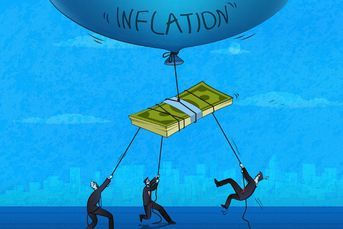Here are the biggest gripes about the Internal Revenue Service
A report produced annually for Congress includes 20 or more of the most serious problems taxpayers face when dealing with the agency.
Most Americans could give you an earful about what’s wrong with the Internal Revenue Service. But could they produce a critique so vast and deep that the executive summary alone is 106 pages?
That feat is performed annually by Nina Olson and her team at the Taxpayer Advocate’s office, an independent body within the IRS. Every year, it must produce a report for Congress that includes 20 or more of the most serious problems taxpayers face when dealing with the agency. This year, the usual two-volume report grew to three, with the addition of “literature reviews” in areas ranging from taxpayer service in other countries to behavioral science lessons for taxpayer compliance.
At the top of the list of IRS shortcomings this year: The agency doesn’t make enough use of behavioral research insights to encourage voluntary compliance with the tax code. (Right, not your top complaint.) Other “needs improvement” areas include taxpayer service (there ya go), the IRS’s debt collection program, and the way the agency evaluates the living expenses of taxpayers on the installment program.
The report gives the IRS credit for better detection of fraud and identity theft but says a lack of flexibility in the IRS’s fraud detection system leads to high false positives in flagging tax returns. That delays refunds.
“IRS filers and business rules used for detecting fraudulent returns and identity theft had many FPRs [false positive returns] over 50%” for calendar year 2016, as of September, the report said. That meant that 1.2 million tax returns, adding up to about $9 billion in refunds, were delayed for more than a month on average. One IRS method of screening for identity theft had a false positive rate of about 91%, the report notes.
Along with flagging problems, the Taxpayer Advocate must propose solutions. The top recommendation: Simplify the 4 million-word tax code. Ms. Olson’s office used the word-count feature in Microsoft Word. In Word, the code ran to nearly 11,000 single-spaced pages, she writes.
A few of the nine specific areas highlighted for reform: a repeal of the Alternative Minimum Tax for individuals; a consolidation of the 12 different incentives to encourage savings for education and the 15 incentives to encourage retirement savings; and a streamlining of the more than 170 penalty provisions for tax violation.
In last year’s report, Ms. Olson cited the IRS’s vision for its future as the top problem facing taxpayers, citing a lack of transparency with taxpayers and Congress about that vision, among other things. Some of her concerns were addressed, the new report says, but not the core one — that in coming up with this picture the agency didn’t study the needs and preferences of taxpayers.
Ms. Olson seems to have gone out and done that for them. In 2016, she held 12 public forums around the country as well as focus groups with tax preparers and practitioners, asked her office’s employees about their views of what taxpayers need, and did a national survey of U.S. taxpayers.
It was a “transformative experience” that led her to write up her vision for what the IRS needs to “be a world-class 21st century tax administration.” That vision is “arguably the most important piece I have written about the IRS in my 15 years of serving as National Taxpayer Advocate,” she writes.
Rather than move to a primarily online self-service mode, Ms. Olson argues that having a human side to the IRS is critical, and that if the IRS wants taxpayers to be engaged, it has to go out and meet with them. To build trust, she says, the agency must push a culture of enforcement more toward one of service, and service that doesn’t disadvantage low-income taxpayers lacking internet access.
“The IRS emphasizes [that] one-on-one assistance is an important part of our Future State efforts,” the agency said in an e-mailed statement. “A key element of our Future State work is to help ensure people and the tax community have the help they need in a form that’s convenient and secure — whether in-person or online. Clearly, many taxpayers want more digital and online options.”
Another concern the report cites is that “initiatives designed to save IRS resources are too often focused inward on the IRS’s own needs — how it can gain cost savings in one area so it can reapply them elsewhere.” Perhaps most important, if Ms. Olson’s recommendations are to move off the page, is a familiar refrain from her office: more funding for the IRS. Without an adequate budget, she writes, “taxpayers are being and will be harmed by the ‘efficiencies’ the IRS imposes to deal with budget reductions.”
Learn more about reprints and licensing for this article.








